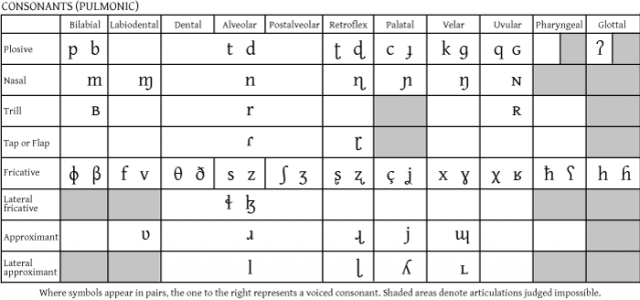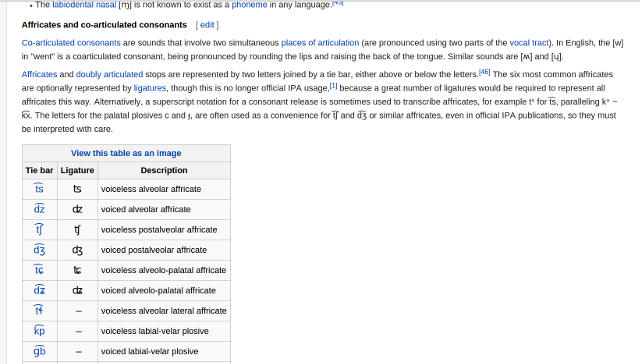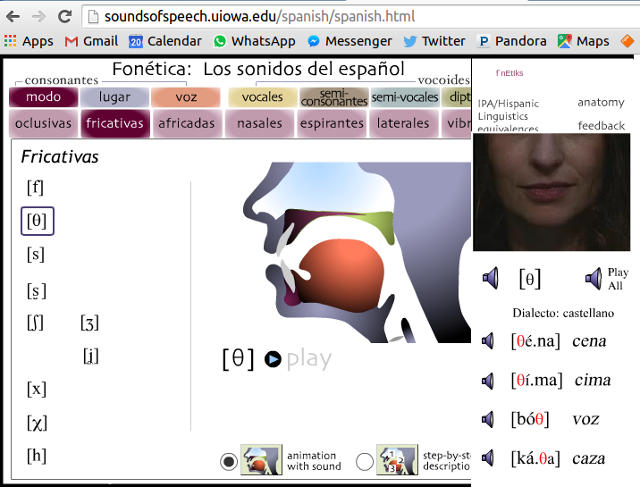The IPA for Spanish Language Learning: Consonants Posted by Jakob Gibbons on Oct 14, 2015 in Learning, Uncategorized
Did you learn Spanish out of a textbook in high school but still struggle to hold a conversation that doesn’t involve ordering food? Or maybe you’ve been speaking Spanish for years but are fed up with that awful acent that gets you made fun of everywhere you travel? I’ve had plenty of students with both of these linguistic diseases, and my tried-and-true prescribed remedy is the IPA.
While a frosty Indian Pale Ale might loosen up your lips for language practice, this post is about the International Phonetic Alphabet (or el Alfabeto Fonético Internacional). It’s the secret language devised by linguists to document and scientifically describe every single meaningful sound that occurs in any human language. It’s how we quantify the parts that make up a language, what makes the letter <f> sound like /f/*. It’s how we demonstrate that the sound made by the Spanish letter <v> isn’t a labiodental fricative like its English cousin, but instead a bilabial approximant, somewhere between English /b/ and /v/. Don’t worry — I’ll explain that one later in this post.
Basically the IPA is the user’s manual to your multilingual mouth, and it’s time to get it out and start reading it. I’ll be honest: it’s gonna take some time to learn. But if you can spare a couple long afternoons or several hours over the course of the week, it might be the best investment you’ve ever made in your language learning.
Earlier this year I made a series of three posts on our Language News blog explaining how language learners can use the IPA. The first post was about consonants, the most straightforward part, and all the same principles apply for learning Spanish.
As I explained in that post, the IPA consonant chart, or tabla de consonantes, has two parts: the labels along the chart’s left side describe the manner of articulation or modo de articulación of a speech sound, or how air is moved through the mouth to produce it. The columns across the top describe a sound’s place of articulation, el punto de articulación, or what physical parts of the mouth are engaged to produce the sound. Think of it as an X- and Y-axis: any time the two intersect, you get a speech sound.
Here’s where the learning curve comes in. Some of these terms are pretty obvious: a dental sound, as the native English speakers in the audience might guess, is made using the teeth. A trill is also what it sounds like, like the /r/ in Spanish. Others — retroflex, uvular, plosive, approximant — take some getting used to. English speakers learning Spanish will probably prefer to use the English IPA table, but many of the technical terms are the same or recognizably similar in the Spanish version.
The Wikipedia page on the IPA is super helpful: it explains a lot of the concepts underlying the IPA, and those that go unexplained are normally clickable links. Advanced learners might try out the Spanish IPA chart for an extra challenge. The concepts and information are exactly the same — it’s just in Spanish.
So here’s why it all matters. The IPA can help you get a feel for using your lips to make bilabial sounds (place of articulation) and softly pushing air through the open space where your lips are ‘approximant’ to one another but not touching (manner of articulation). Suddenly you understand how to pronounce bilabial approximants, which is just linguistic fancy talk for that funny way Spanish speakers pronounce the letter <v> that doesn’t quite sound like an English /v/ or a /b/.
A fantastic tool to help you take the parts learned from the IPA and assemble them into the whole of real speech is the online University of Iowa Sounds of Speech lab. If you want a super practical, hands-on (or mouth-on?) approach to learning how to make Spanish speech sounds, give this a try and you won’t be disappointed. I’ve used it frequently as a language teacher and students nearly unanimously find it one of the most helpful tools out there.
Speech sounds make up one of the most frustrating parts of language learning and often have one of the steepest learning curves. Sounds are hard, but with the IPA they don’t have to be.
Next week I’ll follow up with a post on using the IPA for learning Spanish vowels. Your homework in the meantime is to check out the Language News blog’s original posts on using the IPA for learning consonants and vowels to get a jump on your Spanish pronunciation!
* To represent these sounds, linguists put them between /slashes/. This is to differentiate between a graphic letter (what you see on your keyboard) and a spech sound (the thing represented by that letter on your keyboard). Thus /v/ isn’t the English letter <v>, but instead the sound /v/ that we hear in words like ‘very’ and ‘of’.

Build vocabulary, practice pronunciation, and more with Transparent Language Online. Available anytime, anywhere, on any device.







Comments:
Margaret Amundson:
If you wish to use “gonna” in spoken language,okay. Many people do. But never, never use it in written language. Native Spanish speakers are particularly prone to using “gonna” in both spoken and written English but neither is correct, even if President Obama says “gonna”.
Margaret Amundson
Diane:
I feel bad for anyone trying to learn English or any foreign language due to all the slang and/or poor grammar by the people of whatever country they are in.